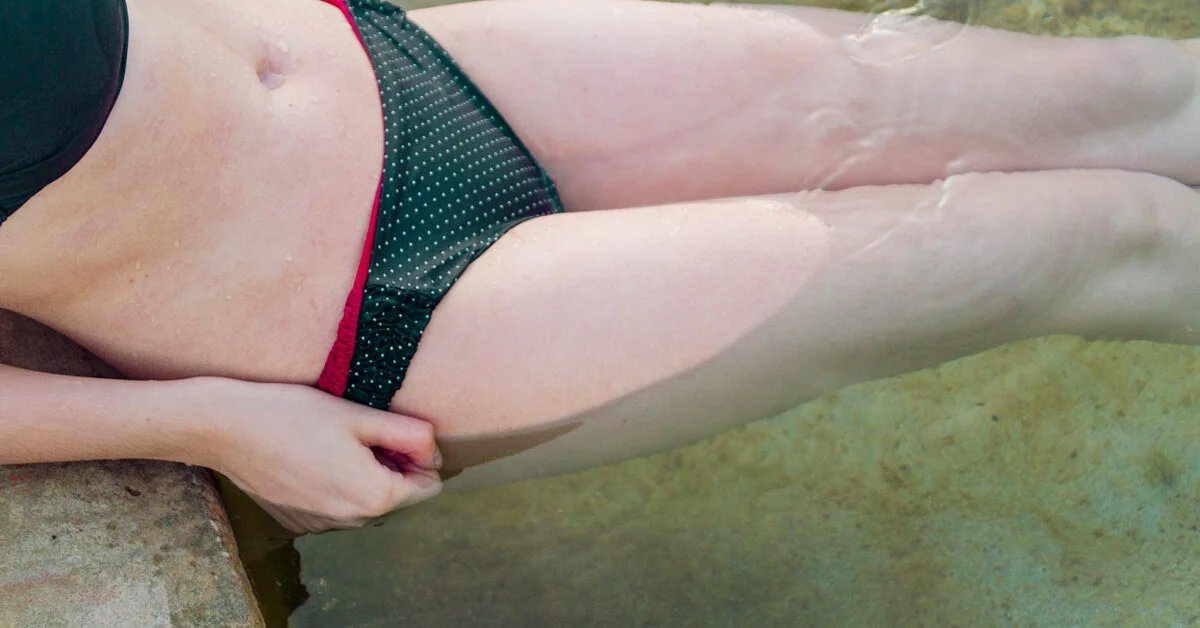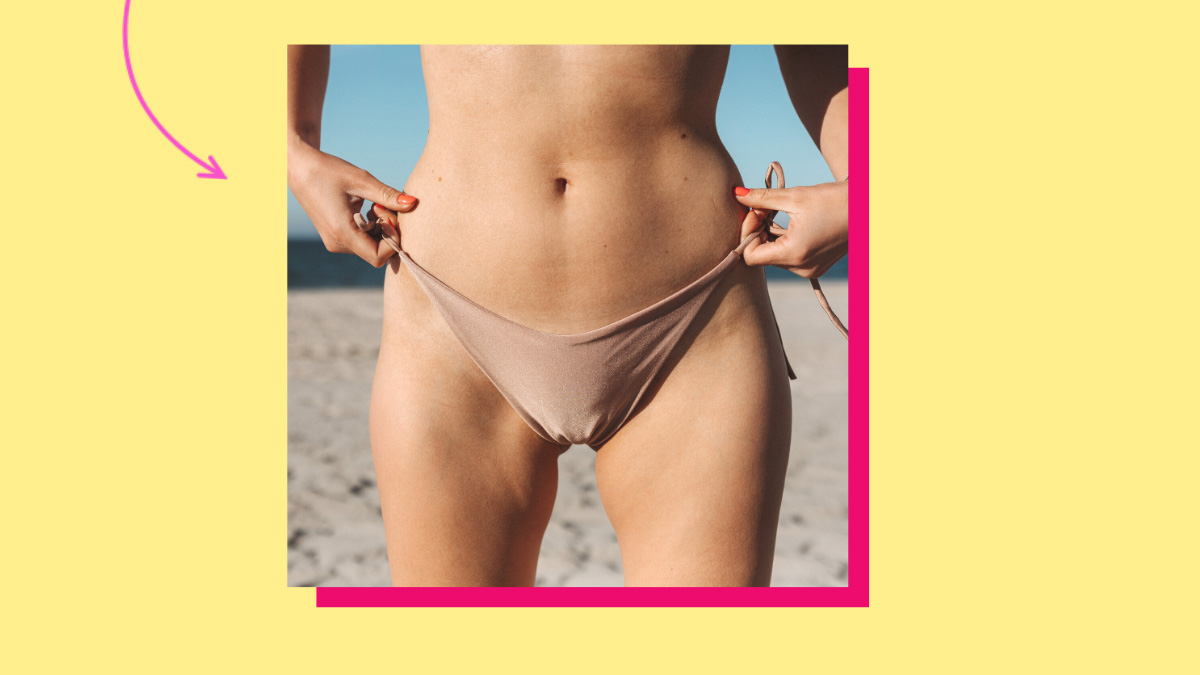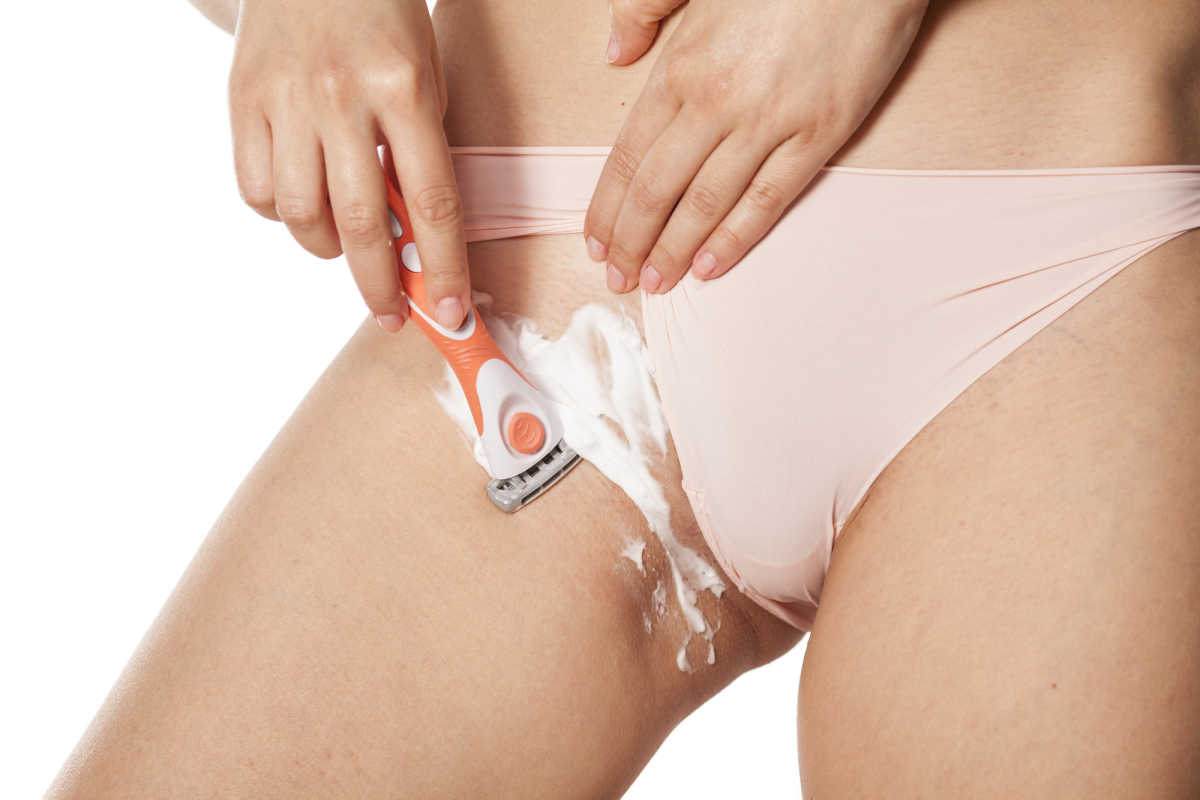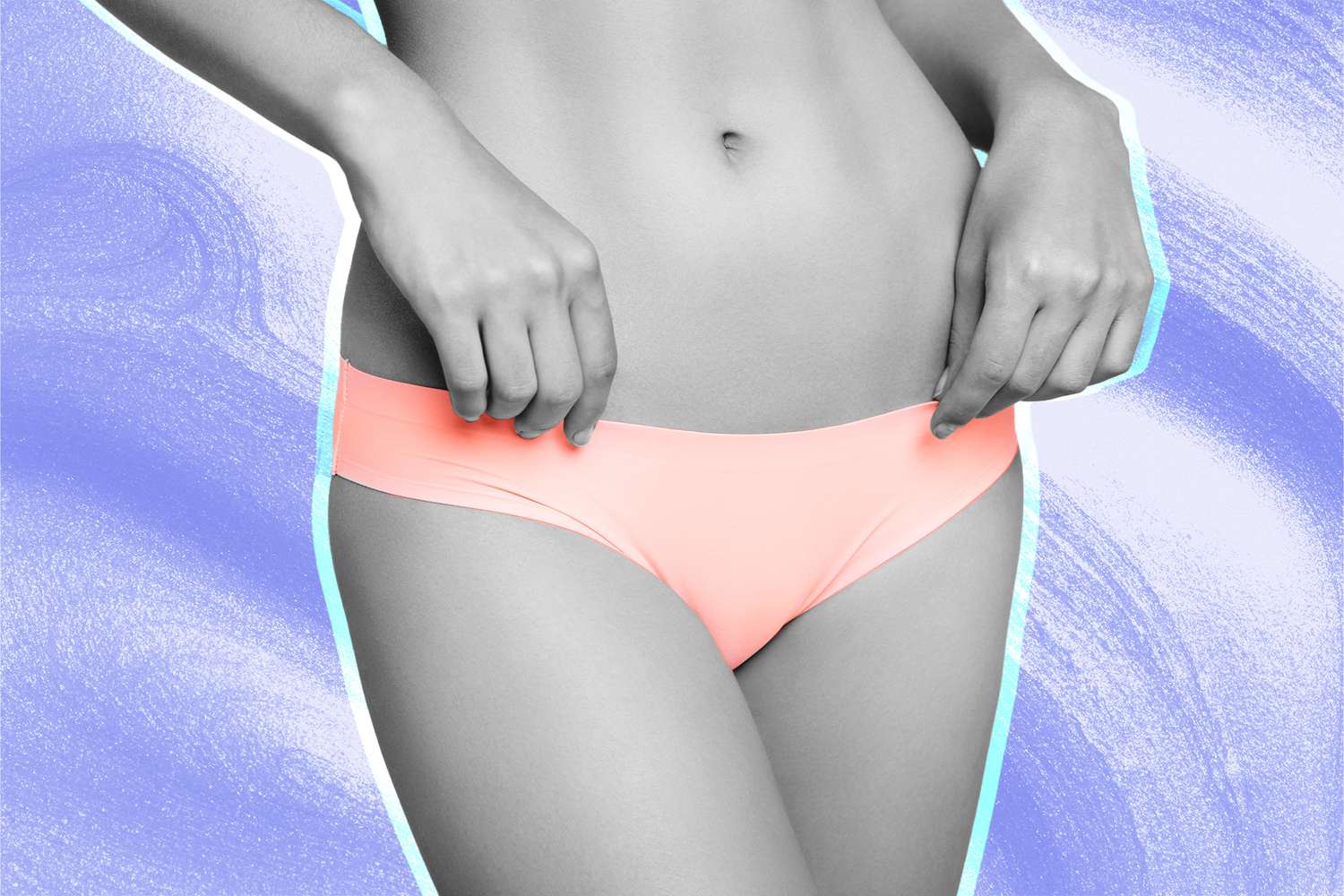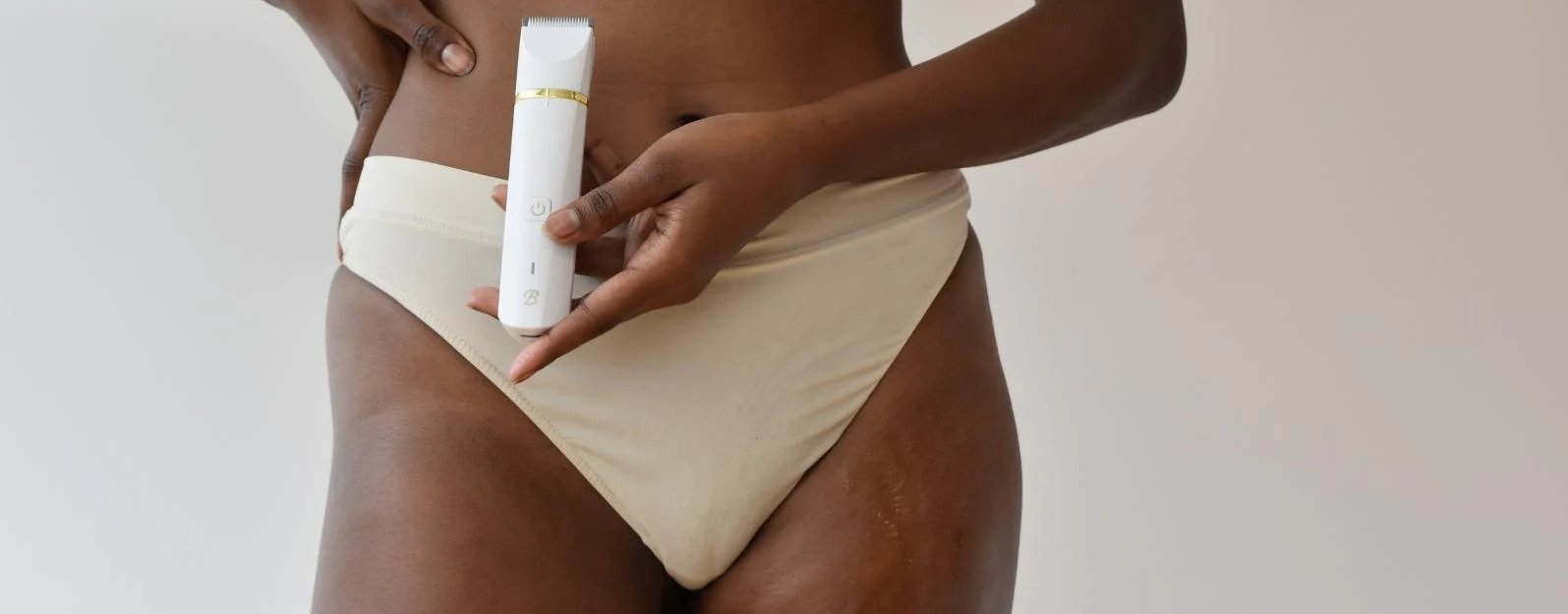Home>How-to Guides>For Women>How To Shave Bikini Line Without Getting Razor Bumps
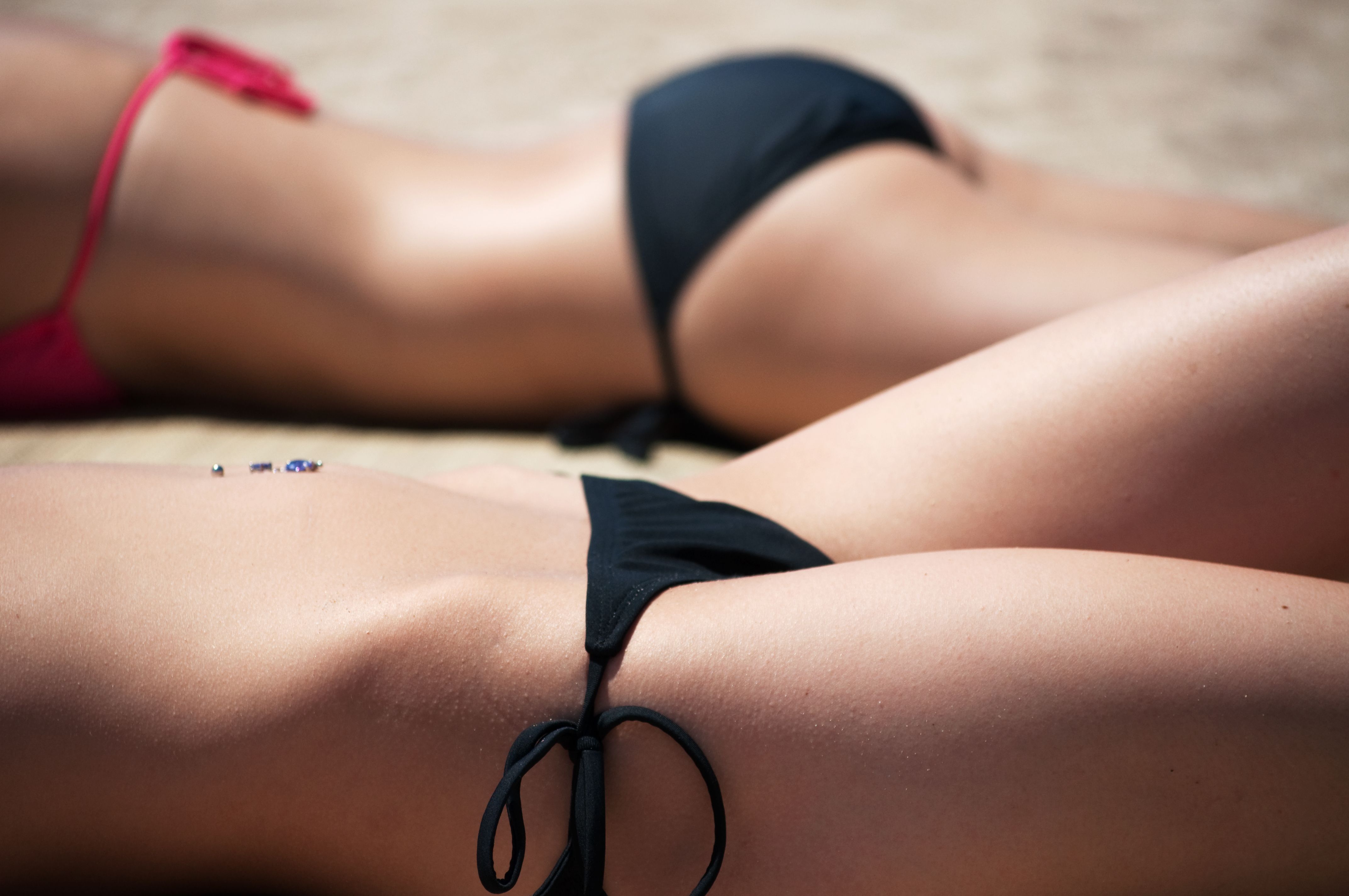

For Women
How To Shave Bikini Line Without Getting Razor Bumps
Modified: September 23, 2023
Learn how to shave your bikini line without getting razor bumps. Perfect for women looking for a smooth, irritation-free shave.
(Many of the links in this article redirect to a specific reviewed product. Your purchase of these products through affiliate links helps to generate commission for Under-tec.com, at no extra cost. Learn more)
Table of Contents
Introduction
Shaving the bikini line is a common grooming practice for many women. However, the dreaded razor bumps can be an unwelcome side effect of this process. Razor bumps, also known as razor burn or pseudofolliculitis barbae, occur when hair follicles become inflamed after shaving. They can cause irritation, redness, and even painful bumps on the skin, making the bikini area look and feel uncomfortable.
Fortunately, there are ways to shave the bikini line without getting razor bumps. By following proper techniques and taking care of your skin before, during, and after shaving, you can minimize the risk of developing those pesky bumps and achieve a smooth and irritation-free bikini line.
In this article, we will explore the steps you can take to ensure a bump-free and enjoyable shaving experience. We will discuss the causes of razor bumps, how to prepare your skin, choose the right razor, and execute the correct shaving technique. Additionally, we will provide valuable tips on post-shave care and share some home remedies that can help alleviate razor bumps if they do occur.
Whether you’re planning for a beach vacation or simply want to feel confident in your swimwear, mastering the art of shaving the bikini line without razor bumps is essential. With the knowledge and tips shared in this article, you’ll be able to achieve a smooth and flawless bikini line that you can confidently show off.
Understanding Razor Bumps
Razor bumps are skin irritations that occur after shaving. They are most commonly seen in areas where hair is thick and curly, such as the bikini area. The main cause of razor bumps is improper shaving techniques, which can lead to ingrown hairs and inflammation of the hair follicles.
When you shave, the razor cuts the hair at an angle, leaving a sharp edge. The regrowing hair then has to push through the skin, and if it curls back into the skin or becomes trapped beneath the surface, it can lead to inflammation and the formation of razor bumps.
Razor bumps typically appear as small, raised bumps on the skin. They can be red, inflamed, itchy, and sometimes painful. In severe cases, they may even develop into pustules or cysts. Not only can they be aesthetically displeasing, but they can also cause discomfort and irritation, making it important to take steps to prevent and treat them.
To prevent razor bumps, it is crucial to understand the factors that contribute to their formation. Some common causes include:
- Using a dull or old razor blade
- Applying too much pressure while shaving
- Shaving against the direction of hair growth
- Not properly preparing the skin before shaving
- Not moisturizing or exfoliating the skin regularly
By becoming aware of these causes, you can adjust your shaving routine and take the necessary precautions to minimize the risk of developing razor bumps.
Preparing Your Skin
Preparing your skin properly before shaving is crucial to minimize the risk of razor bumps. By following these steps, you can make sure your skin is clean, hydrated, and ready for a smooth shave:
- Cleanse the area: Start by cleaning the bikini area with mild soap and warm water. This will remove any dirt, sweat, or bacteria that could potentially cause irritation or infection.
- Exfoliate gently: Use a gentle exfoliating scrub or a soft washcloth to remove dead skin cells and any buildup of oils or products. Exfoliating helps to prevent the trapping of hairs beneath the skin’s surface, reducing the chances of ingrown hairs and razor bumps.
- Steam or use warm compress: To soften the hair and open up the pores, apply a warm compress or expose the area to steam for a few minutes. This will make it easier to get a close shave and reduce the chances of irritation.
- Trim longer hairs: If the hair in the bikini area is longer, consider trimming it with scissors or a bikini trimmer before shaving. This will help prevent the razor from getting clogged and ensure a smoother shave.
- Apply a pre-shave oil or gel: Using a pre-shave oil or gel can provide an extra layer of protection and lubrication, making the razor glide more smoothly across the skin. This can help reduce friction and minimize the chances of razor bumps.
Remember, preparing your skin before shaving is essential for achieving a close and comfortable shave. It helps to create a clean and smooth surface for the razor, reducing the risk of irritation and razor bumps.
Choosing the Right Razor
When it comes to shaving the bikini line, selecting the right razor is crucial to prevent razor bumps and achieve a smooth and irritation-free result. Here are some factors to consider when choosing the right razor:
- Single blade or multiple blades: Single blade razors are often recommended for shaving the bikini area as they are less likely to cause irritation and ingrown hairs. However, some prefer the convenience of razors with multiple blades. If you opt for a multi-blade razor, choose one with fewer blades to minimize the risk of trapping hairs.
- Sharpness of the blades: It’s important to use sharp blades for a clean and precise shave. Dull blades can cause the razor to tug on the hairs, leading to irritation and razor bumps. Replace the blades regularly or opt for razors with replaceable heads.
- Disposable or reusable: Disposable razors are convenient and affordable, but they may not provide the same level of precision and control as reusable razors. Consider your personal preferences and budget when deciding which type to choose.
- Handle design: Look for a razor with a comfortable handle that allows for a secure grip and easy maneuverability. This will help you maintain control and reduce the chances of nicks or cuts.
- Moisture or lubrication strips: Some razors come with moisture or lubrication strips that help provide a smoother glide and added protection. These strips can help reduce friction and minimize the risk of irritation.
Everyone’s preferences and skin sensitivities are different, so it may take some trial and error to find the razor that works best for you. Take the time to experiment with different razor options until you find the one that gives you the desired results and minimizes the occurrence of razor bumps.
Trimming the Hair
Before shaving the bikini line, it is often helpful to trim the hair to a manageable length. This step can make the shaving process easier and reduce the chances of irritation and razor bumps. Here are some tips for trimming the hair:
- Use the right tools: Invest in a quality pair of small, sharp scissors or a bikini trimmer specifically designed for trimming delicate areas. Avoid using regular large scissors or electric shavers, as they can be difficult to maneuver and may cause accidental cuts.
- Start with dry hair: It’s best to trim the hair when it’s dry, as wet hair can clump together and make it harder to achieve an even trim. Dry hair also allows for better visibility while trimming.
- Comb the hair: Gently comb through the hair in the direction of growth to make sure it’s free of tangles and easier to trim. This helps to ensure a more even and precise cut.
- Trim gradually: If you’re unsure about how short you want the hair, start by trimming a little at a time. You can always go back and trim more if necessary, but it’s difficult to fix a trim that’s too short.
- Trim in the direction of growth: To minimize the risk of irritation, always trim the hair in the direction of growth. Trimming against the grain can cause the hair to be cut too short, leading to more chances of razor bumps.
- Check for evenness: After trimming, use a handheld mirror or a magnifying mirror to check for any uneven areas. Make any necessary adjustments to ensure a consistent length.
Remember, the goal of trimming the hair is to make the shaving process smoother and more comfortable. Take your time and be cautious while trimming to avoid any accidents or uneven results. Once the hair is trimmed to a desired length, you’re ready to move on to the next steps of achieving a bump-free shave.
Exfoliating the Area
Exfoliating the bikini area is an important step to prevent razor bumps. It helps to remove dead skin cells, unclog pores, and prevent ingrown hairs. Here are some tips for effectively exfoliating the area:
- Choose the right exfoliator: Look for a gentle exfoliator that is specifically formulated for sensitive areas, as the skin in the bikini area can be more delicate. Avoid harsh scrubs or exfoliants that could irritate the skin.
- Exfoliate before shaving: It’s best to exfoliate the bikini area before shaving to remove any dead skin cells and debris that could potentially clog the razor or lead to ingrown hairs. This will help ensure a smoother and more effective shave.
- Use gentle circular motions: Apply a small amount of the exfoliator to your fingertips and gently massage it onto the skin using circular motions. Be careful not to scrub too harshly, as this can cause irritation. Focus on the areas where you’ll be shaving to thoroughly remove any buildup.
- Pay attention to sensitive areas: The bikini area can be particularly sensitive, so take extra care when exfoliating around the delicate skin. Avoid applying excessive pressure or scrubbing too vigorously in these areas to prevent irritation.
- Rinse thoroughly: After exfoliating, rinse the area thoroughly with warm water to remove any residue from the exfoliator. Pat dry with a clean towel, avoiding harsh rubbing that can cause friction and irritation.
- Exfoliate regularly: Incorporate regular exfoliation into your skincare routine to maintain smooth and bump-free skin. But remember not to overdo it – exfoliating once or twice a week should be sufficient to keep the skin in good condition.
By exfoliating the bikini area before shaving, you help to create a smoother surface for the razor, reduce the risk of ingrown hairs, and improve the effectiveness of your shaving routine. It’s an essential step towards achieving a flawless bikini line without the presence of razor bumps.
Moisturizing the Skin
Moisturizing the skin is a vital step in preventing razor bumps and keeping the bikini area smooth and hydrated. By replenishing moisture after shaving, you can soothe the skin and reduce the risk of irritation. Here are some tips for effectively moisturizing the skin:
- Choose a suitable moisturizer: Opt for a gentle, fragrance-free moisturizer that is specifically formulated for sensitive areas. Look for ingredients like aloe vera, chamomile, or shea butter, which can help calm the skin and prevent dryness.
- Apply moisturizer immediately after shaving: For maximum effectiveness, apply moisturizer to the bikini area immediately after shaving while the pores are still open. This allows the product to penetrate deeply and soothe the skin.
- Massage the moisturizer into the skin: Take a small amount of moisturizer onto your fingertips and gently massage it into the shaved area. Use circular motions to ensure even coverage and absorption.
- Pay attention to sensitive areas: Give extra attention to areas that are prone to dryness or irritation, such as the bikini line and the pubic region. These areas may require a slightly heavier application of moisturizer.
- Reapply throughout the day: If you find that your skin feels dry or tight during the day, consider reapplying moisturizer. This can help maintain hydration and prevent discomfort.
- Stay consistent with moisturizing: Incorporate moisturizing into your daily skincare routine, even when you’re not shaving. Keeping the bikini area moisturized regularly helps to maintain smooth and healthy skin.
Moisturizing the skin after shaving is essential to keep the bikini area hydrated and reduce the chances of razor bumps. It helps to restore the skin’s natural moisture barrier, soothe any irritation, and maintain a smooth and bump-free appearance.
Shaving Technique
Mastering the correct shaving technique is crucial to prevent razor bumps and achieve a smooth and irritation-free bikini line. Here are some key steps to follow:
- Start with a clean razor: Ensure that your razor is clean and free from any residue or debris that could cause irritation. If using a disposable razor, make sure it’s a fresh one or that the blades are sharp.
- Wet the area: Wet the bikini area with warm water or soak in a warm bath for a few minutes to soften the hair and open up the pores. This makes it easier for the razor to glide across the skin.
- Apply a shaving cream or gel: Use a shaving cream or gel that is specifically designed for sensitive areas. This creates a protective barrier between the razor and the skin, reducing friction and minimizing the risk of razor bumps.
- Shave in the direction of hair growth: Shave in the direction that the hair grows, which is typically downward in the bikini area. Shaving against the grain can increase the chances of irritation and razor bumps.
- Use light pressure: Avoid applying excessive pressure while shaving, as this can cause irritation and increase the risk of nicks or cuts. Allow the razor to glide gently over the skin and let the sharpness of the blades do the work.
- Rinse the razor frequently: Rinse the razor blade under running water after each stroke to remove any buildup of shaved hair and shaving cream. A clean razor ensures a smoother shave.
- Take your time and be thorough: Shave slowly and carefully, paying attention to all areas of the bikini line. Rushing can increase the chances of missing spots or going over the same area repeatedly, which can cause irritation.
- Avoid going over the same area multiple times: Going over the same area multiple times can cause unnecessary irritation and increase the likelihood of razor bumps. If necessary, reapply shaving cream or gel and shave in the same direction as before.
- Rinse and pat dry: After shaving, rinse the bikini area with cool water to close the pores and remove any remaining shaving cream. Gently pat the skin dry with a clean towel, avoiding harsh rubbing.
By following these steps and using the correct shaving technique, you can reduce the risk of razor bumps and achieve a smooth and flawless bikini line. Take your time, be gentle with your strokes, and prioritize the comfort and health of your skin throughout the shaving process.
Post-Shave Care
Proper post-shave care is just as important as the shaving technique itself when it comes to preventing razor bumps and maintaining a smooth bikini line. Here are some essential steps to follow for effective post-shave care:
- Rinse with cool water: After shaving, rinse the bikini area with cool water to soothe the skin and close the pores. This helps to reduce the chances of irritation and prevent infection.
- Pat dry gently: Gently pat the shaved area dry with a clean towel, avoiding harsh rubbing that can cause friction and irritation. Be sure to use a towel that is clean and free from any potential bacteria.
- Avoid tight clothing: Opt for loose-fitting clothing after shaving to allow the skin to breathe and minimize friction. Tight clothing can rub against the freshly shaved skin and increase the risk of irritation and razor bumps.
- Avoid touching or scratching: Refrain from touching or scratching the shaved area, as this can introduce bacteria and cause further irritation. Keep your hands away from the area to promote healing.
- Avoid sun exposure: Avoid exposing the freshly shaved bikini area to direct sunlight immediately after shaving. Shaving can make the skin more sensitive to the sun’s rays, increasing the risk of sunburn and further irritation. If you plan to be in the sun, apply sunscreen to protect the area.
- Apply soothing products: Consider applying a gentle, alcohol-free aftershave or aloe vera gel to the shaved area. These products can help calm the skin, reduce inflammation, and provide hydration.
- Moisturize regularly: Apply a moisturizer to the bikini area daily to keep the skin hydrated and prevent dryness. Look for a moisturizer that is suitable for sensitive skin and free from potential irritants.
- Avoid swimming in chlorinated water: Chlorine in pools can be harsh on freshly shaved skin and may cause irritation. It’s best to avoid swimming in chlorinated water immediately after shaving to allow the skin to heal properly.
By following these post-shave care tips, you can promote healing, reduce the chance of razor bumps, and maintain a smooth and healthy bikini line. Caring for your skin after shaving is essential to keep it looking and feeling its best.
Avoiding Common Mistakes
When it comes to shaving the bikini line, it’s important to be aware of the common mistakes that can lead to irritation and razor bumps. By avoiding these pitfalls, you can significantly improve the overall shaving experience and maintain a smoother and bump-free bikini line. Here are some common mistakes to avoid:
- Skipping pre-shave preparation: Neglecting to properly prepare the skin before shaving can lead to increased friction and irritation. Take the time to cleanse, exfoliate, and moisturize the bikini area to ensure a smooth and comfortable shave.
- Using a dull razor: Using a dull or old razor blade increases the chances of tugging and pulling on the hair, leading to irritation and razor bumps. Replace your razor blades regularly or consider using a razor with replaceable heads.
- Pressing too hard while shaving: Applying excessive pressure while shaving can cause irritation and increase the risk of nicks and cuts. Allow the razor to glide gently over the skin without pressing down too forcefully.
- Shaving against the grain: Shaving against the direction of hair growth can cause the hair to be cut too short, leading to ingrown hairs and razor bumps. Always shave in the direction that the hair grows to minimize irritation.
- Going over the same area multiple times: Continuously going over the same area while shaving can cause unnecessary irritation and increase the risk of razor bumps. If necessary, reapply shaving cream or gel and shave in the same direction as before, but avoid excessive passes.
- Using harsh or fragranced products: Harsh soaps, heavily scented shaving creams, and alcohol-based aftershaves can irritate the sensitive skin in the bikini area. Opt for gentle and fragrance-free products formulated for sensitive skin to minimize the risk of irritation.
- Not moisturizing after shaving: Failing to moisturize the skin after shaving can leave it dry and susceptible to irritation. Apply a moisturizer specifically designed for the bikini area to keep the skin hydrated and smooth.
- Ignoring signs of irritation: Pay attention to any signs of irritation, such as redness, itching, or bumps, and take appropriate action to soothe and heal the skin. Ignoring these signs can lead to more severe inflammation and discomfort.
By avoiding these common mistakes and adopting proper shaving techniques and aftercare, you can enjoy a smoother and more comfortable shaving experience while reducing the risk of razor bumps.
Home Remedies for Razor Bumps
If you do experience razor bumps despite your best efforts, there are several home remedies that you can try to alleviate the discomfort and promote healing. While these remedies may not completely eliminate the razor bumps, they can provide relief and aid in the recovery process. Here are some common home remedies for razor bumps:
- Aloe vera gel: Aloe vera gel has soothing and anti-inflammatory properties that can help reduce the redness and swelling associated with razor bumps. Apply a small amount of pure aloe vera gel to the affected area after cleansing it. Allow it to dry before putting on clothing.
- Tea tree oil: Tea tree oil has antibacterial and anti-inflammatory properties that can help soothe razor bumps. Dilute a few drops of tea tree oil with a carrier oil, such as jojoba oil or coconut oil, and apply it to the affected area using a cotton ball. Leave it on for a few hours or overnight before rinsing off.
- Witch hazel: Witch hazel acts as an astringent and can help reduce inflammation and itching caused by razor bumps. Apply witch hazel to a cotton pad and gently dab it on the affected area. Allow it to air dry before applying a moisturizer.
- Warm compress: Applying a warm compress to the affected area can help reduce inflammation and soothe razor bumps. Soak a clean washcloth in warm water, wring out the excess water, and place it on the razor bumps for several minutes. Repeat this process a few times a day.
- Coconut oil: Coconut oil has moisturizing and anti-inflammatory properties that can help alleviate razor bumps. Apply a small amount of coconut oil to the affected area and gently massage it into the skin. Leave it on overnight and rinse off in the morning.
- Aspirin paste: Crush one or two aspirin tablets and mix them with a small amount of water to make a paste. Apply the paste to the razor bumps and leave it on for a few minutes before rinsing off. Aspirin contains salicylic acid, which can help reduce inflammation and exfoliate the skin.
While home remedies can provide relief for razor bumps, it’s important to note that everyone’s skin reacts differently. If the razor bumps persist or worsen, it’s best to consult a dermatologist for further evaluation and treatment.
Conclusion
Shaving the bikini line without getting razor bumps is a common concern for many women. However, with the right knowledge and techniques, achieving a smooth and irritation-free bikini line is possible. By understanding the causes of razor bumps and following proper pre-shave, shaving, and post-shave care, you can significantly reduce the risk of developing those unwanted bumps.
Preparing your skin before shaving is crucial. Cleansing the area, exfoliating gently, and moisturizing the skin help create a smooth surface for the razor and minimize friction. Choosing the right razor, trimming the hair to a manageable length, and using the correct shaving technique are essential steps to prevent razor bumps.
After shaving, post-shave care is important to soothe the skin and promote healing. Rinsing with cool water, patting dry gently, and moisturizing the area help maintain hydration and reduce irritation. Avoiding common mistakes, such as using a dull razor or pressing too hard, can also go a long way in preventing razor bumps.
In the event that razor bumps do occur, there are home remedies that can provide relief. Aloe vera gel, tea tree oil, and warm compresses can help reduce inflammation and soothe the skin. However, if razor bumps persist or worsen, it’s advisable to seek professional advice from a dermatologist.
Remember, achieving a bump-free bikini line may require some trial and error. Each individual’s skin is unique, and what works for one person may not work for another. It’s important to find the techniques and products that best suit your skin’s needs.
By implementing the tips and techniques outlined in this article, you can take the necessary steps to shave your bikini line without experiencing the discomfort of razor bumps. With consistency and care, you can confidently enjoy a smooth and flawless bikini line that allows you to feel comfortable and confident in your own skin.

